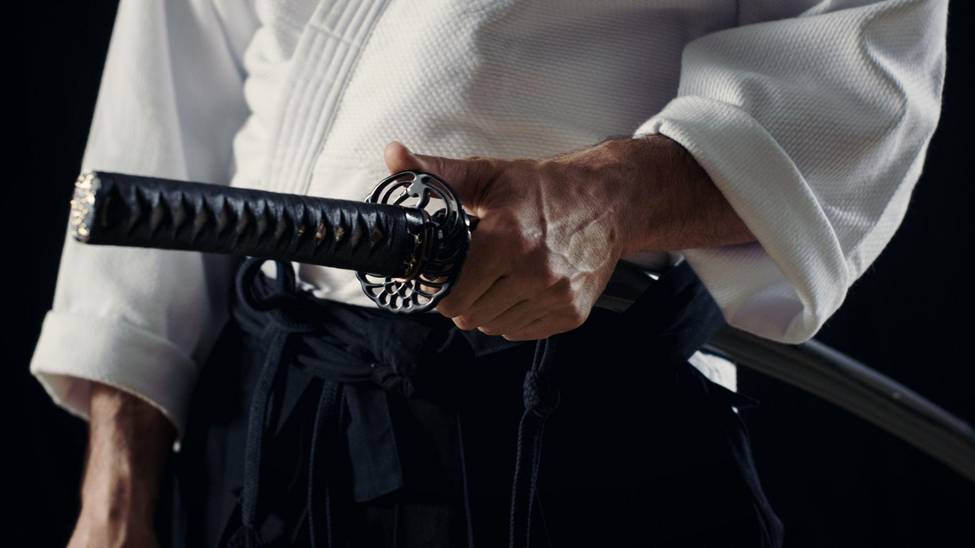How to Grip and Swing a Wakizashi or Katana (or Other Japanese Sword)


There is more than one element to traditional Japanese martial arts, specifically with respect to how to hold, stand, and fight with a sword. But at the same time, perhaps you have seen those videos on social media that showcase how important it is to properly swing the weapon. If you don’t it won’t cut effectively through its target, and can potentially damage the blade. Therefore, it is imperative to know how to grip the sword, what stance to adopt, and how to swing the sword. This short post will break all of that down.
What You Don’t Want to Do
Countless people - countless - assume you’re supposed to swing a wakizashi or katana (or any sword, for that matter) like a baseball bat. When you swing like a baseball bat, the edge simply contacts the target. It will bite in, and slice through, but ineffectively, and you will be robbing yourself of a great deal of slicing efficiency. The tips included herein will help you avoid that inefficiency.
The Stance and Grip
There are several stances that can be utilized effectively when swinging a wakizashi or katana, but for our purposes, all you need to know is that you should have your feet about shoulder width apart with your dominant foot forward and your non-dominant foot slightly behind. As for the grip, it is not unlike how you grip a tennis racket or a golf club. Your dominant hand should grip the tsuka firmly but not tensely, about an inch below the tsuba. The main power in the grip of your dominant hand should come from your middle, ring and little fingers. Your non-dominant hand should grip the base of the tsuka, and again most of the power through your grip should come from your middle, ring and little fingers. As for how hard you grip the tsuka, consider gripping it more like a paintbrush and less like a hammer. This will give you greater dexterity and control over the blade.
How to Swing the Blade (The Slicing Motion)
Now we can get into the substance of how to swing a wakizashi or katana, which will have the greatest impact on how effectively you can slice through different targets. Mainly, as stated, what you want to avoid is striking the edge against a target as though the sword were a club. Rather, you want to draw the edge through the target, taking advantage of the greatest length of the edge, giving you more power and control over how far you can cut. In practice, this means holding the sword above your hand, almost vertically, before drawing it down through the target. This is called “draw cutting” and when the edge strikes the target, you want to use your elbows to pull the sword in towards yourself, to draw the length of the edge along the target. Performing this “draw cut” eliminates the inefficiency created when you strike the edge against a target as though you are batting at it, and instead dynamically draws the edge along the target, as though you are slicing it. This simple adjustment to how you swing a wakizashi, katana, or other Japanese sword (or any sword, really) will dramatically improve the sword’s cutting ability, which will mean you can cut more efficiently through larger, harder, and denser targets.
Additional Tips
One other thing that should be noted here is that edge alignment is key; not only should you stand, grip and swing the sword properly, but you should also take pains to ensure that the edge is aligned properly and that it contacts the target in a perfectly straight line. If your edge contacts the target properly, you will cut much more efficiently. If, however, your edge is off at some angle when it contacts the target, there is a very good chance that it will glance, or worse, that the blade will turn flat against the target rather than biting into it. If you accidentally glance the edge off of a target and strike it with the flat of the blade instead, there is a very good chance that you can damage the blade. In extreme cases, you could even bend the blade or snap it (though that is unlikely with a clay-tempered, real samurai sword). Nonetheless, ensuring proper edge alignment and contact with the target is one of the keys to proper cutting form and efficiency.


Here for a Wakizashi or Katana?
Interested in getting a traditional Japanese sword, like a wakizashi or katana, to add to your collection? Whether you are here for a tanto or a real samurai sword, if you intend to use it for live cutting practice, make sure you get one that is battle-ready. We have a number in our collection and some of them are suitable for live use. Just make sure you get the right one, and if you have any questions, get in touch with us.




















































